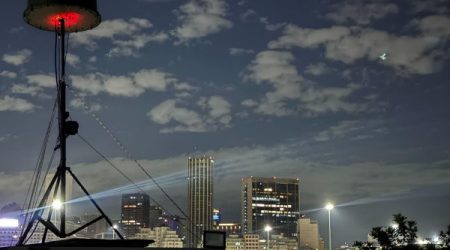Key Takeaways
- Short-staffed National Weather Service (NWS) field offices will receive temporary hiring authority for additional staff.
- This initiative aims to increase weather balloon launches, crucial for accurate weather data, especially ahead of tornado season.
- Rep. Mike Flood plans to introduce a bill to classify NWS meteorologists as public safety employees to enhance job security.
NWS Staffing Solutions Amid Weather Concerns
Nebraska Rep. Mike Flood announced that field offices of the National Weather Service (NWS) facing staffing shortages will soon receive special temporary authority to hire additional staff. This decision comes after significant staffing cuts that have limited their ability to conduct essential weather balloon launches.
Flood highlighted the urgency of this matter during a visit to the NWS office in Omaha, where he confirmed that new hires would enable the office to resume its crucial two-a-day weather balloon launches. He indicated that local leaders would reassess staffing needs before implementing any long-term hiring strategies. The resumption of balloon launches is particularly timely, as tornado season approaches.
“We’ve got such diverse, dangerous weather and we’ve seen so many dangerous weather events lately, it just makes sense that we get on top of this,” Flood stated. He also mentioned that this initiative would extend to other NWS offices across the country, as they too grapple with similar staffing challenges.
Due to recent staffing shortages, the NWS has curtailed weather balloon operations, with some offices like Kotzebue, Alaska; Omaha; and Rapid City, South Dakota, halting launches entirely. Offices in several locations, including Aberdeen, South Dakota; Grand Junction, Colorado; and Green Bay, Wisconsin, have reduced their launches to just one per day. Though Albany, New York, and Gray, Maine, have attempted to maintain two launches daily, they warned that this may no longer be feasible.
Weather balloons are vital for collecting atmospheric data, as they can ascend into the stratosphere to measure temperature, pressure, elevation, and wind speeds—critical information for effective weather prediction. Operating these balloons typically requires at least two personnel, which has become challenging amid staffing shortages.
Flood noted that he learned of the White House’s authorization for temporary hiring last Friday, which he believes will significantly alleviate the pressure on struggling offices. Additionally, he was assured that a long-term strategy for maintaining adequate staffing would be developed.
To further fortify the NWS’s role, Flood plans to introduce legislation next month to reclassify NWS meteorologists as public safety employees. This new designation would provide increased job security and protection against future staffing cuts. “Had that classification been in place,” Flood remarked, “we probably wouldn’t be in this situation right now.”
The ongoing efforts by Rep. Flood and the NWS aim to ensure consistent and reliable weather data collection, critical for public safety and accurate forecasting.
The content above is a summary. For more details, see the source article.















